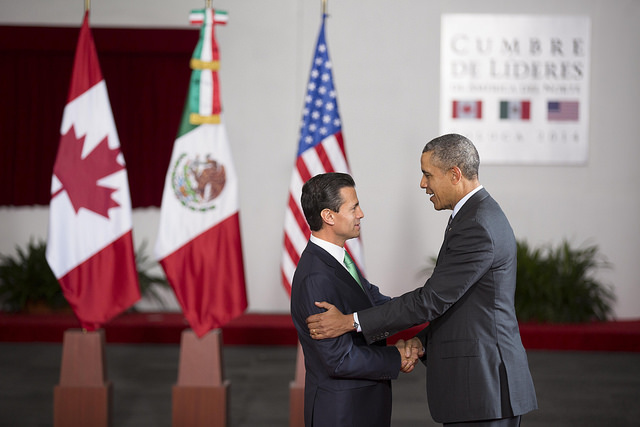By Margaret Myers, director of the China and Latin America Program at the Washington, D.C. think tank The Inter-American Dialogue
 Myers, one of the world’s most respected voices on Latin America-Asia relations, will publish a monthly column in latintrade.com.
Myers, one of the world’s most respected voices on Latin America-Asia relations, will publish a monthly column in latintrade.com.
Latin America can expect both continuity and divergence from Chinese actors in the coming years.
The region has been a critical source of raw materials, such as copper, iron ore, oil, and soy, and an important destination for Chinese exports for almost two decades. It will continue to be so by all accounts. China’s concerns about energy and food security – and their effect on social stability – guarantee as much.
According to the China-Latin America Finance Database, updated in February by the Inter-American Dialogue and the Global Economic Governance Initiative (GEGI), Chinese policy bank finance topped $30 billion in 2015, with much of it supporting natural resource acquisition or machinery exports. In 2015, China also indicated interest in developing several major trans-regional infrastructure projects, such as the Peru-Brazil railway. If they come to pass, these projects will carry key commodities to ports along the region’s Pacific Coast while engaging China’s excess capacity.
Though consistently focused on infrastructure and extractives, Chinese banks and companies are in many cases changing their approach to economic engagement in the region. Chinese companies – public and private — are pursuing strategic, in-country partnerships and greater integration across regional value chains. They are also increasingly cognizant of local standards and regulations, viewing adherence as good for business.
Having witnessed the fallout of overseas projects gone wrong, Chinese ministries, banks, and chambers of commerce have made progress in industrial and environmental reform in recent years, including new regulations and guidelines that seek to promote Chinese firm adherence to global standards when investing overseas. China’s Ministry of Commerce (MOFCOM) and Ministry of Environment (MEP) recently issued Guidelines on Environmental Protection and Cooperation. China Eximbank has its own version of these. And China’s mining industry released the Chinese Due Diligence Guidelines for Responsible Mineral Supply Chains a few months ago.
China’s newest investment policies – as defined in the “1+3+6 cooperation framework” and “3×3 model” – infrastructure plans could be a major boon for Latin America, rather than confining it to the lower rungs of Pacific value chains. These policies support more Chinese investment in a wider variety of “strategic” industries, from logistics to renewables.
Much depends, of course, on Beijing’s progress toward economic reform, among other factors. Enhanced overseas investment is supportive of China’s reform efforts, but will require at least moderate rates of economic growth. China’s “economic transformation” will also have varied effects on Latin American’s raw materials and consumer goods exporters. Demand is still high for many of the region’s commodities but could drop along with China’s rate of domestic investment. The challenge for Latin America is to improve trade conditions and attract much-needed Chinese investment while ensuring that engagement is promoting of sustainable economic growth.
Margaret Myers is the director of the China and Latin America Program at the Inter-American Dialogue, a Western Hemisphere affairs think tank in Washington, DC. Myers has published numerous articles on Chinese leadership dynamics, international capital flows, Chinese agricultural policy, and Asia-Latin America relations, among other topics. She is co-editor of Brave New World: The Political Economy of China-Latin American Relations in the New Millennium, which will be published by Routledge in 2016.


